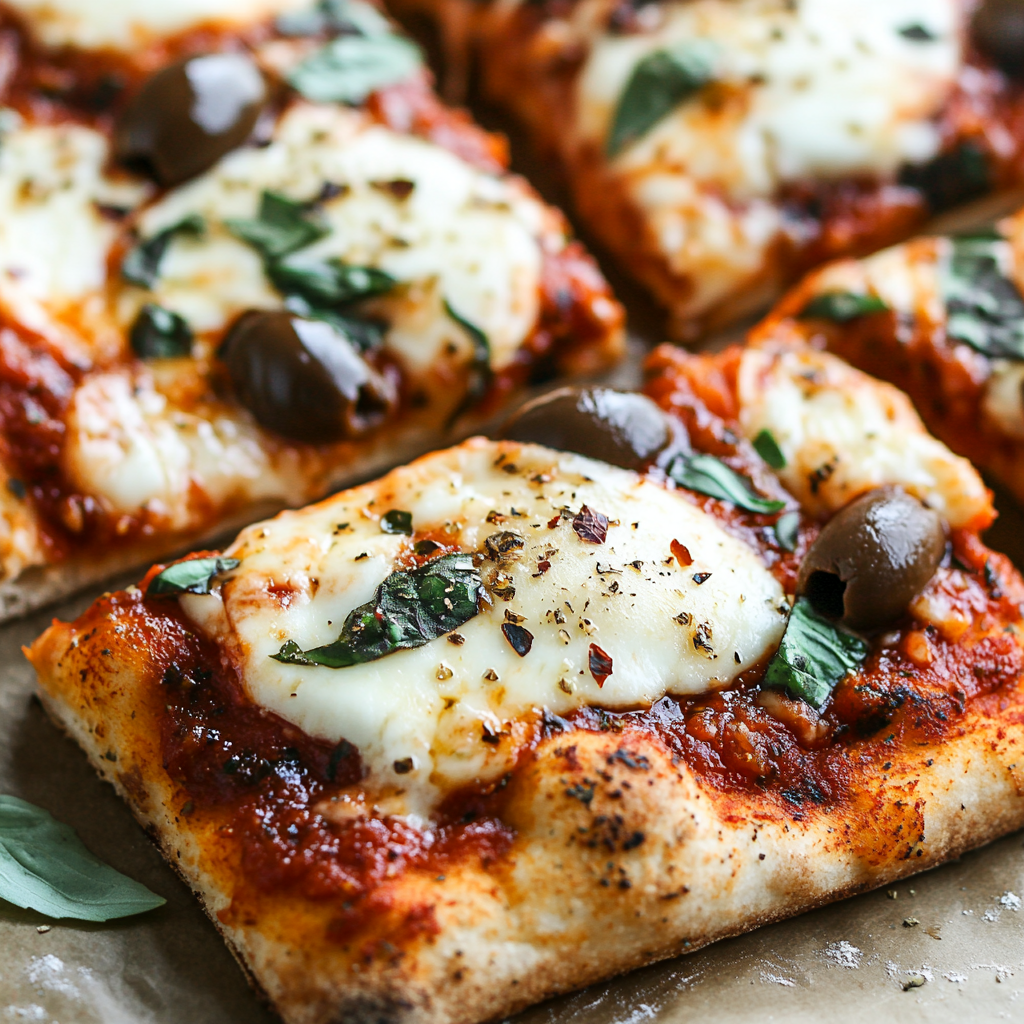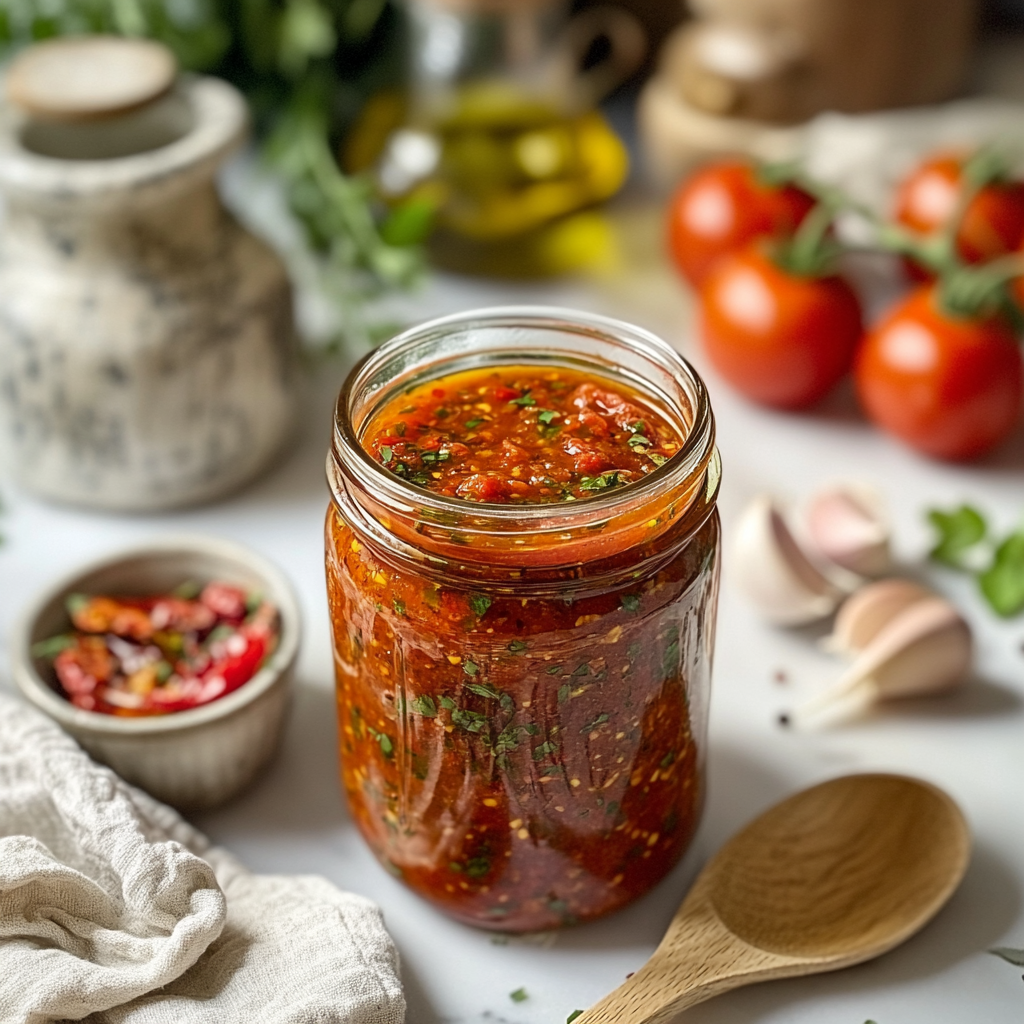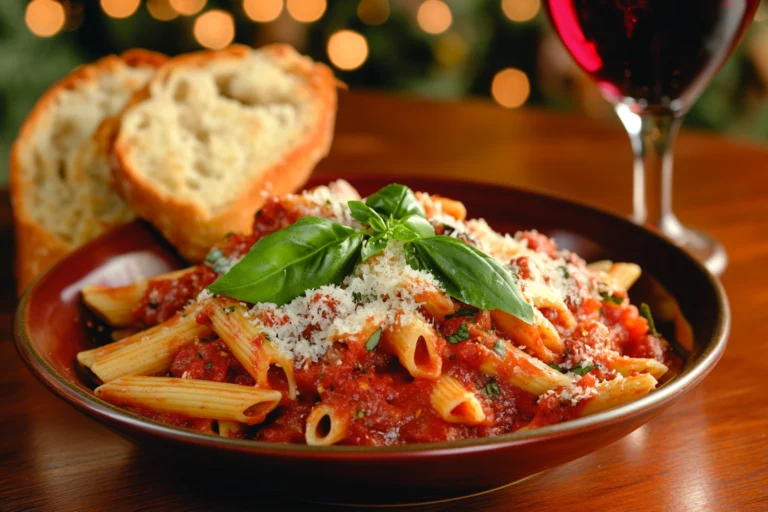Introduction
Arrabiata sauce, a beloved staple in Italian cuisine, is as bold in flavor as it is versatile. With its signature spicy kick and vibrant tomato base, this sauce enhances dishes ranging from classic pasta to contemporary culinary creations. Whether you’re planning a simple weeknight dinner or an elaborate feast, understanding what arrabiata sauce goes with opens up a world of delicious possibilities. In this article, we’ll explore traditional pairings, modern innovations, and practical tips for incorporating this fiery favorite into your meals.
Table of contents
- Introduction
- Introduction to Arrabiata Sauce
- Traditional Pairings
- Contemporary Applications
- Culinary Innovations
- Enhancing Your Culinary Experience
- Frequently Asked Questions (FAQs)
- What dishes pair well with arrabiata sauce?
- How can I make arrabiata sauce less spicy?
- Is this sauce vegetarian-friendly?
- Can I use arrabiata sauce for pizza?
- How long can I store homemade sauce?
- What sets arrabiata sauce apart from marinara?
- What does all arrabbiata pasta mean?
- Is arrabbiata pasta very spicy?
- What is the difference between arrabbiata sauce and spaghetti sauce?
- Conclusion
Introduction to Arrabiata Sauce
What Is Arrabiata Sauce?
Arrabiata sauce is a spicy Italian tomato sauce that translates to “angry” in English. The name reflects its bold and fiery flavors. Originally from the Lazio region of Italy, it is made using simple ingredients such as tomatoes, garlic, olive oil, and chili flakes. These ingredients come together to create a sauce that is both rich and versatile.
For those who enjoy heat, arrabiata sauce delivers. However, it is easy to adjust the spice level if you prefer a milder taste. Because of its simplicity, this sauce is a favorite for many, offering a quick way to transform meals into something special.
Flavor Profile of Arrabiata Sauce
The flavor of arrabiata sauce is unforgettable. It has a tangy tomato base, accented by the warm, sharp taste of garlic and the heat of red chili flakes. Furthermore, the olive oil adds a smooth texture that ties all the flavors together.
For instance, the spice in arrabiata can range from mild to bold, depending on how much chili you add. In addition, its natural acidity makes it a great complement to starchy dishes like pasta or hearty proteins like chicken. While it is known for its spiciness, the sauce also balances the heat with the natural sweetness of ripe tomatoes.
Traditional Pairings
Classic Pasta Dishes
When it comes to what arrabiata sauce goes with, pasta is the clear favorite. This pairing is not just popular—it’s timeless. The sauce’s spicy, tangy flavor matches perfectly with pasta’s mild taste and chewy texture, creating a delightful combination.
Penne all’Arrabiata
Penne pasta is the traditional choice for arrabiata sauce. Its tube shape and ridges hold the sauce well, ensuring every bite is flavorful. To prepare, toss cooked penne with the sauce, add fresh parsley, and top it off with grated Parmesan. It’s quick, simple, and delicious—an Italian classic.
Spaghetti Arrabiata
While penne is the go-to option, spaghetti provides a fun alternative. The long, thin strands of spaghetti get evenly coated with the sauce, making each bite satisfying. Add a drizzle of olive oil and freshly cracked black pepper for a finishing touch.
Incorporating Proteins
Arrabiata sauce isn’t just for pasta. It goes wonderfully with many types of proteins, adding flavor and richness to otherwise simple meals.
Chicken Arrabiata
Chicken and arrabiata sauce are a perfect match. Grilled or pan-seared chicken breasts become tastier when topped with this spicy sauce. Serve them with steamed vegetables or over rice for a filling and balanced meal.
Shrimp Arrabiata
For seafood lovers, shrimp with arrabiata sauce is a must-try. The heat of the sauce enhances the shrimp’s natural sweetness, resulting in a dish that’s both bold and fresh. Serve it over pasta or polenta, or enjoy it on its own as a light entrée.
Vegetarian Options
If you’re looking for meat-free options, arrabiata sauce works just as well in vegetarian recipes.
Eggplant Arrabiata
Roasted eggplant slices covered in arrabiata sauce make for a tasty and healthy dish. The creamy texture of eggplant complements the sauce’s spicy tang. Pair it with some crusty bread or a side salad for a complete meal.
Tofu Arrabiata
For a vegetarian protein alternative, tofu is a great choice. Pan-fry tofu cubes and toss them in the sauce for a quick and flavorful dish. Add sautéed spinach or roasted vegetables to round it out.
Contemporary Applications
Pizza Toppings
Arrabiata sauce isn’t just for pasta. It also makes an excellent base for pizza, giving it a spicy and flavorful twist. Its bold, tangy flavor works wonderfully with a variety of toppings, making it a great alternative to traditional pizza sauces.
Arrabiata Pizza
For example, using arrabiata instead of marinara creates a pizza with more depth and heat. Top it with mozzarella, cherry tomatoes, and fresh basil for a simple yet flavorful pie. If you enjoy extra spice, add chili flakes or roasted peppers to enhance the heat further.
Complementary Ingredients
Arrabiata sauce pairs well with many pizza toppings. Mushrooms, olives, caramelized onions, and artichokes all work beautifully. For a vegetarian option, grilled zucchini or roasted bell peppers can make the dish colorful and satisfying.

Sandwiches and Paninis
This sauce also adds a spicy boost to sandwiches and paninis, making them more exciting and flavorful.
Chicken Arrabiata Panini
For instance, layering grilled chicken, fresh mozzarella, and a spread of arrabiata sauce between crusty bread creates a delicious panini. Once toasted, the flavors meld together perfectly. This option is ideal for lunch or a quick dinner.
Vegetarian Arrabiata Sandwich
For a meat-free choice, roasted vegetables and arrabiata sauce make a great combination. Eggplant, zucchini, and bell peppers are especially tasty. Adding fresh greens like arugula gives the sandwich a nice crunch and freshness.
Dipping Sauce
Surprisingly, arrabiata sauce also works as a dip, thanks to its thick texture and bold flavor.
Appetizers
Breadsticks, mozzarella sticks, and even rice balls pair wonderfully with this sauce. Its tangy spice enhances the richness of these snacks, making it a hit for gatherings or casual meals.
Snack Pairings
Additionally, vegetable sticks such as celery and carrots are a healthy match for arrabiata sauce. Alternatively, you can serve it with crispy potato wedges or tortilla chips for a more indulgent snack.

Culinary Innovations
Arrabiata in Baked Dishes
Arrabiata sauce is not just for stovetop meals. It is also a great choice for baked recipes, adding bold flavor to classic comfort foods.
Arrabiata Lasagna
For example, layering arrabiata sauce with lasagna sheets, ricotta, mozzarella, and sautéed vegetables makes a flavorful and hearty dish. The sauce’s tangy and spicy taste works its way into every layer, giving each bite extra zest. To add more texture, you can include roasted eggplant or zucchini slices.
Baked Ziti with Arrabiata Sauce
Another popular option is baked ziti. Combine cooked ziti pasta, ricotta, mozzarella, and arrabiata sauce in a baking dish. Bake it until it bubbles, and the cheese melts. The spiciness of the sauce adds a nice contrast to the creamy cheese, making it a crowd-pleasing meal for any occasion.
Fusion Cuisine
Arrabiata sauce is also perfect for fusion dishes, where different flavors and cuisines come together.
Arrabiata Tacos
You can give tacos an Italian twist by using arrabiata sauce as a topping for grilled chicken, beef, or roasted vegetables. The spicy sauce goes well with taco fillings, creating a bold and exciting flavor. To balance the spice, serve with shredded cheese or a dollop of sour cream.
Arrabiata Stir-Fry
Arrabiata sauce can also be added to stir-fried noodles or vegetables for a creative mix of Italian and Asian flavors. Combine the sauce with soy sauce and sesame oil to create a unique spicy dish. For extra protein, add tofu or chicken, and sprinkle with chopped green onions for a fresh finish.
Enhancing Your Culinary Experience
Adjusting Heat Levels
One of the best things about arrabiata sauce is how easily you can adjust its spice level. Whether you like it mild or extra spicy, it’s simple to customize.
Customizing Spiciness
If you prefer a milder flavor, reduce the amount of chili flakes you use. You can also add a little sugar or cream to soften the heat. On the other hand, if you want more spice, try adding extra chili flakes or fresh chopped chilies. This way, you can create a version of the sauce that works perfectly for your taste.
Pairing with Beverages
Choosing the right drink can make arrabiata sauce even more enjoyable. A refreshing beverage not only balances the spice but also highlights the flavors of the dish.
Refreshing Options
For instance, sparkling water with a touch of citrus is a great choice to cool your palate. You can also try cucumber-infused water or a chilled herbal tea, which works well with the spicy kick of the sauce. These drinks are simple yet effective in enhancing your dining experience.
Preparing Homemade Arrabiata Sauce
Making arrabiata sauce at home is both easy and rewarding. Not only does it taste better, but you can also control the ingredients to suit your preferences.
Recipe
Start by heating olive oil in a pan and sautéing minced garlic until fragrant. Then, add fresh or canned tomatoes, chili flakes, and salt. Let the sauce simmer for 20–30 minutes until it thickens. You can blend it for a smooth texture or leave it chunky for a rustic feel.
Storage Tips
Homemade arrabiata sauce lasts up to a week when stored in an airtight container in the fridge. For longer storage, freeze the sauce in smaller portions. This way, you’ll always have a quick and flavorful option ready to go.
Frequently Asked Questions (FAQs)
What dishes pair well with arrabiata sauce?
This spicy tomato sauce complements a variety of meals. It’s perfect with pasta, roasted vegetables, pizza, and proteins like chicken or shrimp. Additionally, it works as a dip for appetizers like breadsticks or mozzarella sticks.
How can I make arrabiata sauce less spicy?
To reduce the heat, simply use fewer chili flakes or add a hint of sugar to balance the flavor. Cream or butter can also mellow the spice while enhancing the sauce’s rich texture.
Is this sauce vegetarian-friendly?
Yes, it is! With its simple, plant-based ingredients—like tomatoes, olive oil, garlic, and chili flakes—this sauce is ideal for vegetarian dishes.
Can I use arrabiata sauce for pizza?
Absolutely. Its tangy, spicy flavor makes it an excellent pizza base. Combine it with mozzarella, fresh basil, and roasted vegetables for a unique twist on traditional pizzas.
How long can I store homemade sauce?
Stored in an airtight container, it lasts up to a week in the fridge. For longer storage, freeze it in smaller portions for up to three months to enjoy later.
What sets arrabiata sauce apart from marinara?
While marinara is mild and herbaceous, arrabiata adds a fiery kick thanks to chili flakes. Both are tomato-based, but arrabiata’s spiciness makes it stand out as a bold option.
What does all arrabbiata pasta mean?
The word “arrabbiata” translates to “angry” in Italian, which refers to the spicy heat of the sauce. The dish is typically made with a tomato-based sauce, featuring ingredients like garlic, olive oil, and red chili flakes, which give it a fiery kick. The heat from the chilies combined with the rich flavors of the sauce is what earns the dish its bold and “angry” name, making it a favorite for those who enjoy a spicy meal.
Is arrabbiata pasta very spicy?
Arrabbiata pasta is known for its spicy flavor, though the level of heat can vary depending on how much chili is used in the sauce. The dish often includes red chili flakes that impart a strong, peppery heat, which is balanced by the savory richness of the tomato sauce. For those who prefer a milder taste, the amount of chili can be adjusted. However, the characteristic spiciness is what defines the dish and gives it its “angry” reputation.
What is the difference between arrabbiata sauce and spaghetti sauce?
Arrabbiata sauce is a type of tomato sauce with a distinctive spicy flavor, made using ingredients like garlic, olive oil, and chili flakes. In contrast, spaghetti sauce, or marinara sauce, is generally milder and can feature a broader range of ingredients, including herbs like basil and oregano, and sometimes even meat. The major difference between the two is the level of heat—arrabbiata sauce is known for its intense spiciness, while spaghetti sauce is typically more savory and less fiery.
Conclusion
Embracing the Versatility of Arrabiata Sauce
Without a doubt, arrabiata sauce is one of the most flexible staples in Italian cuisine. It changes simple dishes into tasty masterpieces, making it an important addition to your recipe collection. Furthermore, its strong flavors and ability to adjust ensure that it goes well with a wide range of meals.
For example, classic dishes like Penne all’Arrabiata show off its traditional use, while baked recipes such as lasagna or ziti emphasize its flexibility. In addition, its spicy kick makes it a great choice for pizza bases or even dipping sauces. Whether you prefer mild flavors or crave strong heat, this sauce adjusts easily to suit your taste.
Ultimately, trying out arrabiata sauce opens up endless cooking possibilities. Why not try it in a fusion dish or pair it with your favorite roasted vegetables? With so many options to explore, this sauce is sure to become a favorite in your kitchen.

